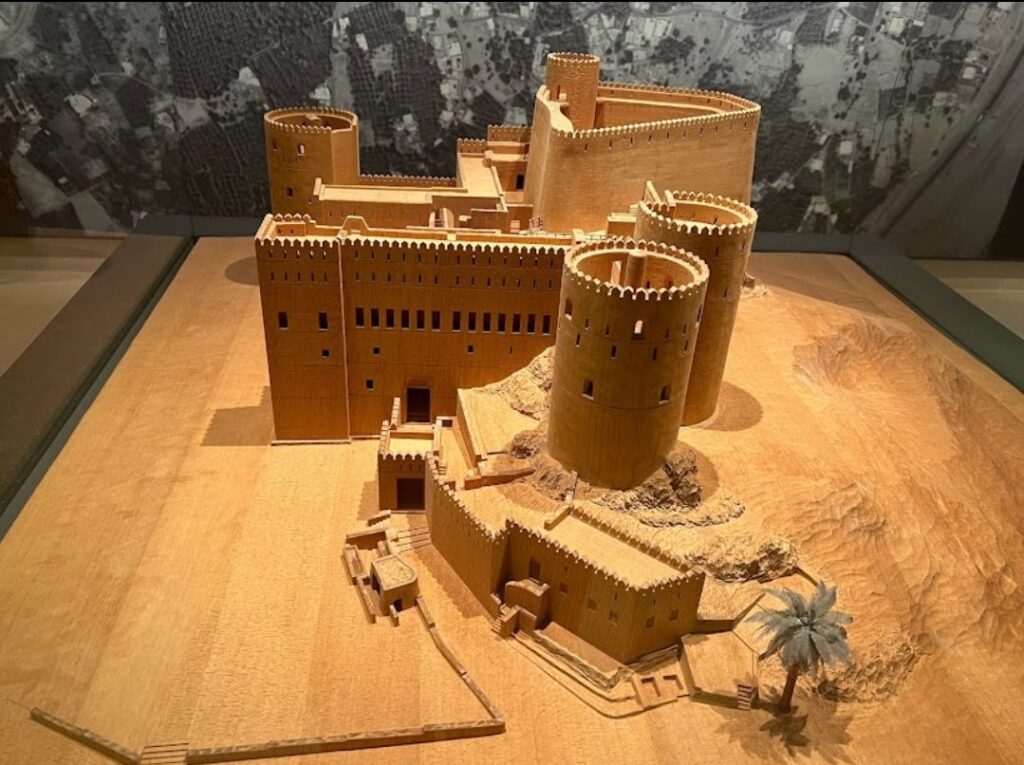The journey of the National Museum took its first steps in the early 1970s, when His Majesty Sultan Qaboos bin Said expressed his vision of a flagship repository of Oman’s cultural heritage. Decades of planning ensued, growing from tentative discussions to drawn up plans. Gradually, this vision transformed into a remarkable reality in which we take immense pride.

The planning, design and construction of the museum we see today involved an enormous number of moving parts, experts from Oman and around the world convened both in the Sultanate and abroad to begin creating something we knew to be ambitious. We strived to establish an institution par excellence for education and community outreach, and for scientific and historical research. Above all, we strived to create a memorable and authentic experience for Omanis, residents and visitors alike.
That experience tells the story of our nation. It reaches far back into its prehistory, leading us seamlessly into the present day culminating in Oman’s glorious Renaissance. It explores the many facets of Oman: its illustrious maritime history, its glorious architectural heritage, the trade in frankincense, the ingenious aflaj irrigation systems and the indelible mark left by the blessed advent of Islam to our nation. Developed in line with the highest international museum practices, the National Museum is a manifestation of decades of archaeological discoveries and historical research, told from a uniquely Omani perspective. Oman, after all, is a synthesis of its rich cultural heritage of bold seafarers, enterprising merchants and grand visionaries. Each of these elements, and many more, form an enduring part of the fabric of Oman. Similarly, the National Museum’s structure itself is enduring. Situated opposite the Qasr al-’Alam Palace in historic Muscat, the soul of our nation’s capital, its clean and bold lines convey that perfect blend of traditional and contemporary aesthetics that has become Oman’s hallmark. It is within these walls – and beyond – that we will continue to carry our vision, to become a leading Omani museum institution and to set a benchmark for the museums industry in the Sultanate. The official opening of the National Museum took place on 14 December 2015 CE, as part of the nation’s celebration of the 45th National Day, under the auspices of His Highness as-Sayyid Fahd bin Mahmoud al-Said, Deputy Prime Minister for the Council of Ministers.

The National Museum of the Sultanate of Oman is amuseum located in Oman. It was developed as a resultof a ten-year collaboration between the Ministry ofHeritage and Culture, the Royal Estate Affairs of Oman,Jasper Jacob Associates, and Arts ArchitectureInternational Ltd, and opened to the public in 2016.
The National Museum of the Sultanate of Oman, established by royal decree in 2013 and opened July 30, 2016, is the Sultanate’s flagship cultural institution, showcasing the nation’s heritage from the earliest human settlement in the Oman Peninsula some two million years ago through to the present day. As a national institution with global outreach, the museum is dedicated to ensuring that Oman’s cultural heritage is understood and appreciated not only within the Sultanate, but also internationally. Further, it aims to provide opportunities for cultural expression, innovation, and the transfer of traditional skills and knowledge from one generation to the next.

The museum is located in the heart of Muscat in a purpose-designed building. The total area of the building is 13,700 square metres (147,000 sq ft), including 4,000 square metres (43,000 sq ft) allocated for 14 permanent galleries – The Land and the People Gallery, Maritime History Gallery, Arms and Armour Gallery, Aflaj Gallery, Currency Gallery, Prehistory and Ancient History Galleries, Splendours of Islam Gallery, Oman and the World Gallery, Intangible Heritage Gallery and Renaissance Gallery, among others. A further 400 square metres (4,300 sq ft) are allocated for temporary exhibitions.
The National Museum houses 5,466 objects and offers 43 digital immersive experiences, a fully equipped Learning Centre, conservation facilities, an ultra-high definition cinema, and discovery areas for children. It features an integrated infrastructure for special needs and is the first museum in the Middle East to adopt Arabic Braille script for the visually impaired. The museum contains a voluminous collection of prehistoric metallic artefacts. It also houses the region’s first open-plan museum storage concept, where visitors can learn about the various processes that artefacts go through before they are put on display.

Sunday 10 AM–5 PM
Monday 10 AM–5 PM
Tuesday 10 AM–5 PM
Wednesday 10 AM–5 PM
Thursday 10 AM–5 PM
Friday 2–6 PM
Saturday 10 AM–5 PM
Adult citizens and GCC Nationals
1.000 OMR
(Please bring your ID)
Residents
2.000 OMR
(Please bring your Resident Card)
Tourists
5.000 OMR
as-Sa`idyyah Street, opposite of Qasr al-Alam
Wilayat of Muscat, Hillat an-Ni`am
Area code 001
P.O. Box 1105
P.C. 100, Muscat, Sultanate of Oman
22081500
22081599
Shared route
From (23.6058821,58.5533951) to National Museum of Oman, opposite Al Alam Palace، Al Saidiya St, Muscat via Al Bahri Rd/Route

Leave a Reply